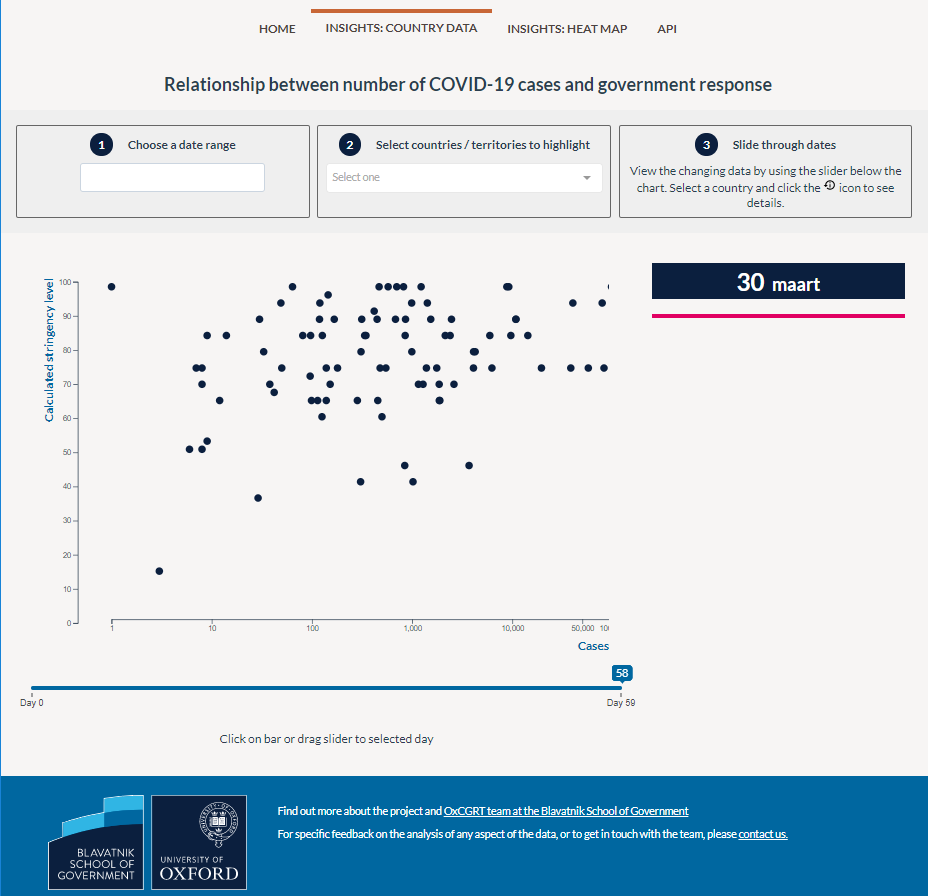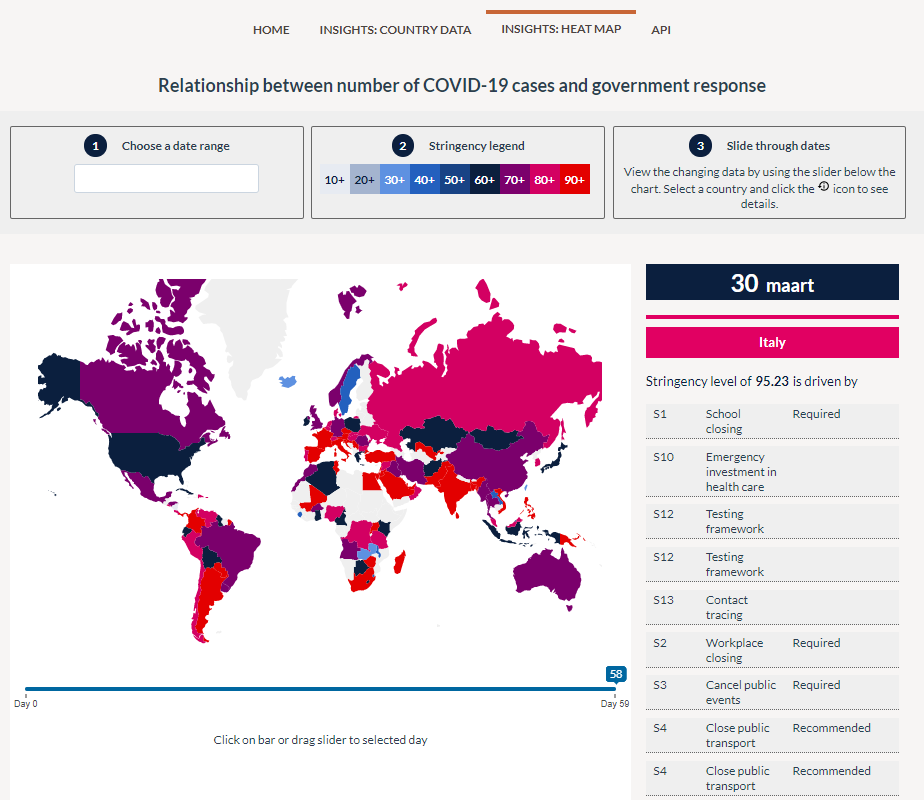Track government measures on COVID-19 with the Oxford Government Response Tracker
The Oxford COVID-19 Government Response Tracker enables a comparison of the measures that governments across the globe have taken as a response to COVID-19
COVID-19 is spreading rapidly across the globe. This spread has led national governments to take a wide range of measures, such as closing public spaces and schools, and introducing travel bans. However, these governmental responses and the pace at which they occur vary significantly from one country to another. These differences have created a debate between policymakers and the public on the appropriate response to the situation.
The Oxford COVID-19 Government Response Tracker was created by the University of Oxford. It documents government responses to COVID-19 in different countries across the globe. This enables users to review, analyse, and compare what the governments’ responses to the pandemic were and how these have evolved over the full period of the disease’s spread. The aim of this response tracker is to provide researchers, policymakers, and citizens with the possibility to compare the measures, across countries, over time and against the number of COVID-19 cases. For example, countries that are in an early stage of the coronavirus outbreak can observe how other countries, which are already in a later stage (e.g. Italy), reacted to the outbreak when they were at that point.

Figure 1: Country data visualisation of the Stringency Index against number of cases

Figure 2: Heatmap visualisation of the Stringency Index over time
The Blavatnik School of Government at the University of Oxford has set up an impressive team for this project, including dozens of Oxford students and staff from all over the world. Public sources are used to find information on 11 indicators of government responses from 190 countries. These include 7 policy decisions on an ordinal scale (school closing, workplace closing, cancellation of public events, public transport closing, public information campaigns, restrictions on internal movement, and international travel controls) and 4 financial indicators on a continuous scale. To enable a comparison between countries, they specified and calculate a “COVID-19 Government Response Stringency Index”. This index is an additive score of the seven policy decision indicators, rescaled to vary from 0 to 100. It allows interested parties to study the variation in government responses and plot them against the number of COVID-19 cases. Important to note here is that the index does not aim to measure the appropriateness or effectiveness of a country’s response, but rather offers a way for countries to compare responses and learn from one another.
Globally, the responses of governments were observed to become more stringent as the severity of the outbreak has increased. The Oxford Covid-19 Government Response Tracker shows visualisations in two ways. First, a graph shows the stringency score per country against the number of COVID-19 cases over the past few months (see figure 1). Second, a map of the world shows the stringency score per country over time (see figure 2). Click on the description of the figure above to see the visualisations.
In addition to the combined stringency score of government measures, it would be interesting to see a visualisation of each measure per country. Therefore, the figure below is created by the EDP for COVID editorial team (see figure 3). As can be seen from the figures, countries are responding in different ways to the threat of COVID-19.

Figure 3: Government responses to COVID-19 as of 7 April 2020.
This example of visualising the data, in addition to the visualisations offered by the Oxford COVID-19 Government Response Tracker itself, can already provide valuable insights. The project is currently planned to run from March 2020 until May 2020 and the data is continuously updated. The dataset is released in the open under a Creative Commons Attribution licence. For specific feedback on the analysis or any aspect of the data, re-users are invited to let the Oxford COVID-19 Government Response Tracker team know.
The main researchers of the Oxford COVID-19 Government Response Tracker are Thomas Hale, Sam Webster, Anna Petherick, Toby Phillips, and Beatriz Kira.
Contact details: feedback form; e-mail: enquiries@bsg.ox.ac.uk; phone: +44 (0)1865 614 343.
Looking for more open COVID-19 related datasets or initiatives? Visit the EDP for COVID-19 curated lists and follow us on Twitter, Facebook or LinkedIn.
